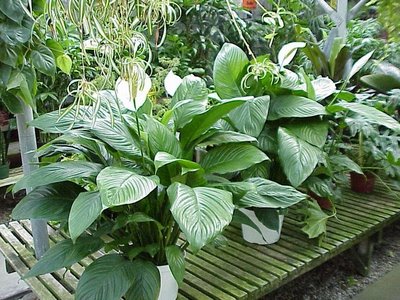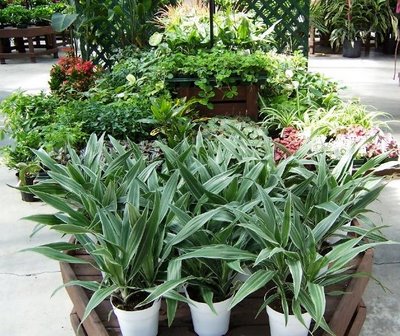Repotting Your Houseplants

Plants just brought home from the greenhouse seldom need immediate repotting. Many will not require potting for some time. A newly acquired plant must make adjustments to its new environment, and repotting immediately puts added strain on the plant.
When a plant is potbound (roots are too extensive for the pot) it may require too frequent watering and makes poor growth. This is a time for repotting.
A good potting mixture for most houseplants consists of a blend of three parts sphagnum peat, one part vermiculite and one part perlite. Many commercially available "peat-lite" mixes are ideal for houseplants. Exceptions are the epiphytic orchids, which should be potted in a very porous medium such as orchid bark, and cacti, which should be potted in equal parts of peat-lite mix and sterile sand. In most cases it is wise to avoid the addition of soil to a potting medium, as this often leads to poor drainage, overwatering and root diseases.
Acid-loving plants such as azaleas and gardenias should have at least 50 percent peat moss or other organic material in the soil mixture. With good care, these plants can be grown successfully in peat moss with no soil added.
Sterilize soil mixes before using them to avoid contamination by insects, diseases and weed seeds. In one method, moist soil is heated in a 200-degree oven for about 30 minutes or until it is heated through. Cover the container or wrap soil in aluminum foil to keep it from drying out while being heated. Chemicals can also be purchased for soil sterilization.
When repotting, avoid excessive damage to the root system. Firm the soil gently around the root ball, but do not press so hard that the soil becomes compacted.
Allow enough space at the top of the pot so that water can be added easily. Water newly potted plants thoroughly, drain and do not water again until necessary.

When should a plant be re-potted?
Some plants may need re-potting each year while others may not need it for many years. Also, some plants seem to do well when pot-bound while others do not.
Here are some indicators for when a plant needs to be re-potted.
-
Roots begin to grow through the drainage holes.
-
Roots appear on the soil surface.
-
The soil mass is filled with roots.
-
New leaves are smaller than normal.
-
The plant wilts between normal waterings.
Timing is important. Re-potting is best accomplished when the plant is actively growing. Typically this is done in spring or early summer.
Sometimes it is best to simply replace the old and tired plant, especially if it is too large for the space. You may purchase a new one, or depending upon the plant type, make a new plant using the correct propagation technique.
Gently knock the plant out of its container and look at the roots. For root-bound plants, cut and/or unwind any circling roots. If there is a salt buildup (crusty white residue) on the soil surface, remove it carefully by scraping away the top inch of old soil. Then replant into the new container using fresh potting mix. Make sure the plant is re-potted at the same depth it was grown in the old pot. Gently press the soil around the roots and water immediately. Also, leave a little room at the top of the pot to allow for easy watering.







0 Comments:
Post a Comment
<< Home